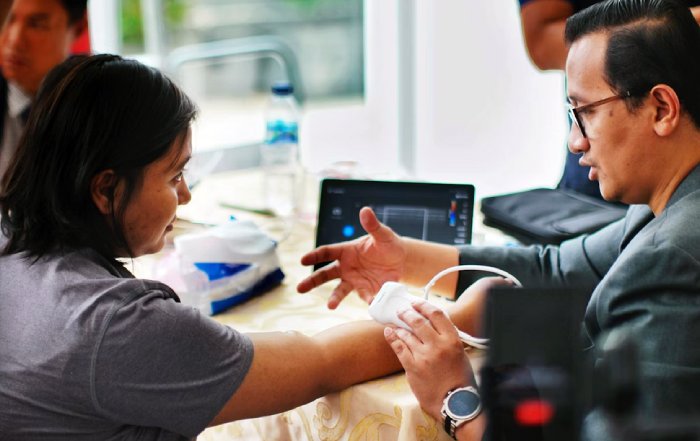The Growing Influence of Wellness Brands on Consumer Choices in 2025
The Rise of Wellness as a Global Economic and Cultural Force
By 2025, wellness has moved decisively from a niche lifestyle trend to a central organizing principle of consumer behavior across continents, income levels, and industries. What began as a focus on diet, exercise, and stress reduction has evolved into a multidimensional ecosystem in which wellness brands increasingly shape how people in the United States, the United Kingdom, Germany, Canada, Australia, France, Italy, Spain, the Netherlands, Switzerland, China, Sweden, Norway, Singapore, Denmark, South Korea, Japan, Thailand, Finland, South Africa, Brazil, Malaysia, New Zealand and beyond make decisions about what to buy, how to live, and which businesses to trust. As WellNewTime continues to chronicle this transformation through its dedicated coverage of wellness, health, and lifestyle, it has become clear that wellness is no longer a peripheral consideration; it is a primary lens through which consumers evaluate brands, workplaces, travel destinations, and even financial choices.
Industry analysts now estimate the global wellness economy to be worth trillions of dollars, with robust growth across segments such as personal care, nutrition, fitness, mental health, workplace wellness, and preventive healthcare. Reports from organizations such as the Global Wellness Institute show that wellness spending is outpacing overall global economic growth, reflecting a structural shift rather than a passing fad. At the same time, the acceleration of digital health solutions, the mainstreaming of mindfulness and mental health awareness, and the integration of sustainability into wellness narratives have combined to make wellness brands central opinion leaders in markets from North America and Europe to Asia, Africa, and South America.
From Products to Philosophies: How Wellness Brands Define Modern Lifestyles
The most influential wellness brands today do not simply sell products or services; they articulate coherent philosophies of how to live, work, travel, and age. Consumers increasingly look to these brands to curate information, reduce complexity, and provide a sense of direction in a world of overwhelming choice and constant disruption. Whether they are deciding on a fitness program, a nutritional regimen, a skincare routine, or a corporate employer, individuals are guided by brand narratives that connect physical health, emotional balance, purpose, and environmental responsibility.
This shift has been driven in part by the proliferation of data and research into lifestyle-related diseases, mental health challenges, and the impact of chronic stress, which has made it easier for consumers to understand the long-term consequences of their daily decisions. Reputable sources such as the World Health Organization and the U.S. Centers for Disease Control and Prevention provide authoritative guidance on the links between behavior and health outcomes, and wellness brands that align with this evidence-based perspective have gained credibility and influence. At the same time, platforms like WellNewTime, which integrates coverage of fitness, beauty, mindfulness, and innovation, help translate complex health and science insights into practical lifestyle choices for a global audience.
In this environment, consumers in cities from New York and London to Berlin, Toronto, Sydney, Paris, Milan, Madrid, Amsterdam, Zurich, Shanghai, Stockholm, Oslo, Singapore, Copenhagen, Seoul, Tokyo, Bangkok, Helsinki, Johannesburg, São Paulo, Kuala Lumpur, and Auckland are gravitating toward brands that offer holistic frameworks rather than isolated products. The most successful wellness brands position themselves as partners in life design, providing guidance across multiple domains, from sleep quality and stress management to sustainable consumption and meaningful work.
Trust, Transparency, and Evidence: The New Currency of Wellness
The growing influence of wellness brands has also heightened scrutiny of their claims, practices, and governance. Consumers in 2025 are more informed and skeptical than ever, and they increasingly demand transparency about ingredient sourcing, scientific validation, data privacy, labor practices, and environmental impact. This is particularly true in markets such as the United States, the United Kingdom, Germany, Canada, the Nordic countries, and parts of Asia, where regulatory frameworks and consumer advocacy have raised expectations around corporate responsibility.
Trust has become the central competitive differentiator in the wellness sector. Brands that can demonstrate genuine expertise, authoritativeness, and trustworthiness are better positioned to influence consumer choices and command premium pricing. Many of them now invest heavily in research collaborations with universities and medical institutions, drawing on resources such as PubMed and guidelines from the National Institutes of Health to ensure that their products and services are grounded in credible science rather than marketing hype. Independent testing, third-party certifications, and transparent disclosure of study limitations have become powerful trust signals.
For a platform like WellNewTime, which places a premium on evidence-based reporting across its health, beauty, and environment sections, this environment underscores the importance of rigorous editorial standards. Readers increasingly expect wellness coverage to differentiate between substantiated benefits and speculative claims, and they reward brands and publishers that consistently uphold this distinction. In turn, wellness companies that partner with credible media and scientific advisors are better equipped to build long-term relationships with discerning consumers.
The Convergence of Wellness, Beauty, and Personal Care
One of the most visible expressions of the wellness revolution is the transformation of the global beauty and personal care industry. In markets from Europe to Asia and North America, consumers now evaluate beauty products not only on aesthetic outcomes but also on health impact, ethical sourcing, and psychological well-being. This has led to the rise of wellness-oriented beauty brands that emphasize skin health, barrier function, microbiome balance, and minimal ingredient lists, often inspired by dermatological research and preventive medicine.
Major players and emerging brands alike are investing in formulations that align with guidance from organizations such as the European Chemicals Agency and the U.S. Food and Drug Administration, while also responding to consumer demand for cruelty-free, vegan, and environmentally conscious products. Learn more about how regulatory science is reshaping cosmetics and personal care to understand the depth of this shift. At the same time, the integration of mindfulness and self-care rituals into beauty routines has blurred the boundaries between external appearance and internal well-being, reinforcing the idea that beauty is an expression of health, rest, and emotional balance.
For the editorial team at WellNewTime, which covers these developments in its beauty and wellness sections, this convergence provides an opportunity to help readers navigate a crowded marketplace. By highlighting brands that combine dermatological expertise, ethical practices, and psychological insight, the platform supports consumers in making choices that honor both personal health and planetary boundaries, whether they are shopping in London, Berlin, Toronto, Sydney, Tokyo, or São Paulo.
Massage, Recovery, and the Science of Rest
Massage and bodywork have moved from the margins of luxury spa culture into the mainstream of health and performance, driven by a deeper understanding of how recovery influences physical and mental resilience. Athletes, knowledge workers, caregivers, and remote professionals across the United States, Europe, and Asia are incorporating massage, myofascial release, and manual therapies into their weekly routines, often guided by wellness brands that integrate these services into broader programs of sleep optimization, stress management, and mobility training.
Scientific interest in the physiological effects of massage has grown, with research published through platforms such as ScienceDirect and professional bodies like the American Massage Therapy Association exploring the role of touch in modulating pain, inflammation, and nervous system regulation. As telemedicine and digital health tools expand, some wellness brands are combining in-person massage with virtual coaching, biometric tracking, and personalized recovery protocols, creating hybrid models that appeal to time-pressed professionals in cities from New York and London to Singapore and Seoul.
Within this landscape, WellNewTime has devoted increasing attention to massage as a core pillar of holistic wellness, curating insights in its massage and fitness coverage. By connecting readers with evidence-based perspectives on how recovery practices enhance cognitive performance, emotional stability, and long-term health, the platform reinforces the message that rest is not a luxury but a strategic investment in productivity and quality of life.
Fitness, Digital Platforms, and the Hybrid Wellness Consumer
The fitness industry has undergone profound disruption and reinvention over the past decade, culminating in a 2025 landscape where in-person training, connected devices, and digital platforms coexist in a dynamic ecosystem. Consumers in the United States, the United Kingdom, Germany, Canada, Australia, Japan, South Korea, and beyond now expect fitness brands to offer flexible, hybrid experiences that integrate home workouts, outdoor activities, studio sessions, and workplace wellness programs. This shift has been accelerated by advances in wearable technology, AI-driven coaching, and streaming platforms, many of which draw on research from organizations like the American College of Sports Medicine to design safe and effective training protocols.
Wellness brands that operate in the fitness space increasingly position themselves as guardians of long-term health rather than short-term aesthetics, emphasizing functional movement, cardiovascular health, metabolic resilience, and mental well-being. Learn more about the evolution of exercise science and its influence on consumer expectations to see how this reorientation is playing out globally. In parallel, corporate employers in sectors from finance and technology to manufacturing and public services are partnering with wellness providers to offer integrated fitness and mental health benefits, recognizing that employee well-being is closely tied to engagement, retention, and innovation.
For WellNewTime, which dedicates substantial coverage to fitness, business, and jobs, this convergence of personal and professional wellness underscores the need for nuanced analysis. Readers increasingly seek guidance on how to evaluate fitness brands that promise data-driven personalization, how to interpret metrics from wearables and apps, and how to integrate movement into demanding work schedules without compromising rest and recovery.
Corporate Wellness, Employer Branding, and the Future of Work
The influence of wellness brands now extends deeply into the labor market and corporate strategy. In 2025, job seekers across North America, Europe, and Asia routinely evaluate potential employers based on their wellness offerings, including mental health support, flexible work arrangements, ergonomic design, and opportunities for physical activity and social connection. Employer branding has become inseparable from wellness branding, as organizations recognize that their reputation for caring about employee well-being directly impacts their ability to attract and retain top talent.
Leading companies collaborate with wellness providers to design comprehensive programs that address physical health, mental resilience, financial literacy, and work-life integration, often drawing on frameworks from institutions such as the World Economic Forum and the OECD that link well-being to productivity and inclusive growth. Learn more about sustainable business practices to understand how wellness is being integrated into ESG (environmental, social, and governance) strategies. This trend is particularly visible in knowledge-driven economies such as the United States, the United Kingdom, Germany, the Nordic countries, Singapore, South Korea, and Japan, where competition for skilled workers is intense.
Within this context, WellNewTime's coverage of business, jobs, and world developments plays a critical role in informing readers about best practices in corporate wellness and the evolving expectations of employees. By highlighting case studies where wellness initiatives have measurably improved engagement, reduced burnout, and supported diversity and inclusion, the platform helps both employers and professionals make more informed decisions about where and how they want to work.
Mindfulness, Mental Health, and the Normalization of Emotional Well-Being
One of the most profound shifts in consumer behavior has been the normalization of conversations about mental health, stress, and emotional well-being. Wellness brands have played a pivotal role in destigmatizing therapy, mindfulness practice, and stress management tools, often drawing on research from institutions such as Harvard Health Publishing and the American Psychological Association to frame mental health as an integral component of overall wellness rather than a separate or shameful issue.
Meditation apps, mindfulness platforms, and mental health-focused wellness brands now serve millions of users across continents, offering guided practices, cognitive behavioral tools, and psychoeducational content in multiple languages. Learn more about mindfulness and its evidence base to appreciate why consumers in cities from London and Berlin to Tokyo and Bangkok are integrating these practices into daily routines. The pandemic-era surge in anxiety and burnout has left a lasting legacy, making mental health support a non-negotiable expectation in workplaces, schools, and healthcare systems.
For WellNewTime, whose mindfulness and wellness coverage regularly explores the intersection of neuroscience, psychology, and everyday life, this transformation underscores the importance of nuanced, stigma-free reporting. Readers look to the platform not only for information about specific practices but also for guidance on how to evaluate mental health apps, coaching services, and digital therapeutics in terms of privacy, clinical oversight, and cultural sensitivity.
Sustainable Wellness: Environment, Travel, and Conscious Consumption
As awareness of climate change, biodiversity loss, and resource scarcity intensifies, consumers are increasingly scrutinizing the environmental footprint of their wellness choices. This has given rise to a new generation of wellness brands that integrate sustainability into every aspect of their identity, from regenerative agriculture and low-impact packaging to carbon-neutral logistics and nature-based experiences. The connection between planetary health and human well-being, emphasized by organizations such as the United Nations Environment Programme and the Intergovernmental Panel on Climate Change, is now a central theme in wellness narratives worldwide.
Wellness tourism, in particular, has undergone a significant shift. Travelers from North America, Europe, and Asia who seek retreats and restorative experiences increasingly prioritize destinations and operators that support local communities, protect ecosystems, and align with global sustainability standards. Learn more about responsible travel to understand how wellness tourism is evolving from indulgence to stewardship. This trend is visible in eco-resorts in Thailand and Indonesia, spa destinations in the Alps and Scandinavia, and wellness-focused lodges in South Africa and Brazil, all of which position themselves as guardians of both human and environmental well-being.
WellNewTime reflects this convergence through its environment, travel, and lifestyle sections, highlighting brands and initiatives that demonstrate authentic commitment to sustainability rather than greenwashing. By examining the supply chains, certifications, and community impact of wellness offerings, the platform helps readers make informed choices that align personal health goals with broader ecological and social responsibilities.
Innovation, Data, and the Ethics of Personalized Wellness
The rapid advance of technology has opened new frontiers in personalized wellness, from genetic testing and microbiome analysis to AI-driven coaching and predictive health analytics. Wellness brands increasingly leverage data from wearables, sensors, and digital platforms to tailor recommendations for nutrition, exercise, sleep, and stress management, promising highly individualized programs that adapt to each user's biology and lifestyle. Companies and research groups often draw on resources such as the European Medicines Agency and the World Bank to navigate regulatory and economic implications of these innovations.
However, this personalization also raises complex ethical questions about data privacy, algorithmic bias, accessibility, and the commercialization of health information. Learn more about digital health ethics to explore these challenges in depth. Consumers in technologically advanced markets such as the United States, the United Kingdom, Germany, the Netherlands, Sweden, Singapore, South Korea, and Japan are increasingly aware of the risks associated with sharing sensitive health data, and they demand clear assurances about how their information is stored, used, and monetized.
WellNewTime, through its innovation, news, and world coverage, is uniquely positioned to examine these issues from a global perspective. By analyzing the promises and pitfalls of emerging wellness technologies, the platform helps readers balance the appeal of personalized insights with a clear-eyed understanding of data governance, equity, and long-term societal impact.
The Strategic Imperative for Brands in a Wellness-Driven World
For organizations across sectors-whether they operate in consumer goods, hospitality, finance, technology, healthcare, or media-the growing influence of wellness brands on consumer choices represents both an opportunity and a strategic imperative. Consumers in 2025 do not compartmentalize wellness; they expect every brand they interact with to demonstrate an understanding of how its products, services, and policies affect physical, mental, social, and environmental well-being. This expectation applies not only to explicitly wellness-focused companies but also to airlines, banks, retailers, real estate developers, and digital platforms.
To remain competitive, brands must cultivate genuine expertise in wellness-related domains, build partnerships with credible organizations, and embed well-being into their core business models rather than treating it as a marketing add-on. Learn more about integrating wellness into corporate strategy to appreciate the depth of organizational change required. This includes rethinking product design, supply chains, workplace culture, customer experience, and community engagement through a wellness lens, and measuring outcomes using robust metrics rather than superficial indicators.
For WellNewTime, which serves readers interested in brands, business, and lifestyle, this moment offers a chance to provide nuanced guidance at the intersection of consumer expectations and corporate responsibility. By showcasing organizations that exemplify experience, expertise, authoritativeness, and trustworthiness in wellness, the platform supports a more informed marketplace in which both individuals and institutions can make better-aligned decisions.
Looking Ahead: Wellness as an Organizing Principle for the Next Decade
As 2025 unfolds, the trajectory of wellness suggests that its influence on consumer choices will only deepen in the years ahead. Demographic shifts, including aging populations in Europe and East Asia and a growing middle class in parts of Asia, Africa, and South America, will continue to fuel demand for preventive health, longevity solutions, and quality-of-life enhancements. At the same time, technological innovation, climate pressures, and evolving social norms will reshape how wellness is defined, delivered, and experienced across regions and income levels.
In this evolving landscape, wellness brands that demonstrate genuine commitment to evidence-based practice, ethical conduct, inclusivity, and sustainability will be best positioned to guide consumer choices and shape cultural narratives. Platforms like WellNewTime, which integrates perspectives across wellness, health, business, environment, travel, and innovation, will play an essential role in curating trustworthy information and fostering informed dialogue at a global scale.
For consumers from New York to London, Berlin to Singapore, Tokyo to Johannesburg, and São Paulo to Sydney, the central question is no longer whether wellness matters, but how to navigate a rapidly expanding ecosystem of brands and offerings with discernment and confidence. The answer lies in prioritizing experience, expertise, authoritativeness, and trustworthiness-criteria that will define not only the next generation of wellness brands, but also the broader contours of business, culture, and daily life around the world.










